
As the blockchain ecosystem continues to evolve, developers are increasingly turning to modular architectures to overcome the scalability and flexibility limitations of monolithic chains. At the heart of this transformation is Celestia, a purpose-built data availability (DA) layer that enables rollup builders to deploy high-throughput, application-specific blockchains while offloading consensus and data storage to a dedicated network. With Celestia’s current price at $1.46, its growing adoption as a DA solution reflects not only technical innovation but also market confidence in its approach.
Why Data Availability Matters for Modular Blockchains
Data availability is the cornerstone of blockchain security and scalability. For rollups, blockchains that batch transactions and post them to a layer 1 network, ensuring that all transaction data is accessible and verifiable by anyone is critical. If data becomes unavailable, users cannot independently verify state transitions or submit fraud proofs, thereby undermining trust in the system.
Traditional monolithic chains like Ethereum handle execution, consensus, and data availability within a single protocol. This architecture creates bottlenecks as demand grows. In contrast, Celestia decouples these functions, providing a specialized DA layer that any rollup can leverage for secure and scalable operation.
How Celestia Solves the Data Availability Challenge
Celestia introduces several key innovations that collectively address the longstanding challenges of blockchain data availability:
Celestia’s Core Technical Features for Modular Rollups
-
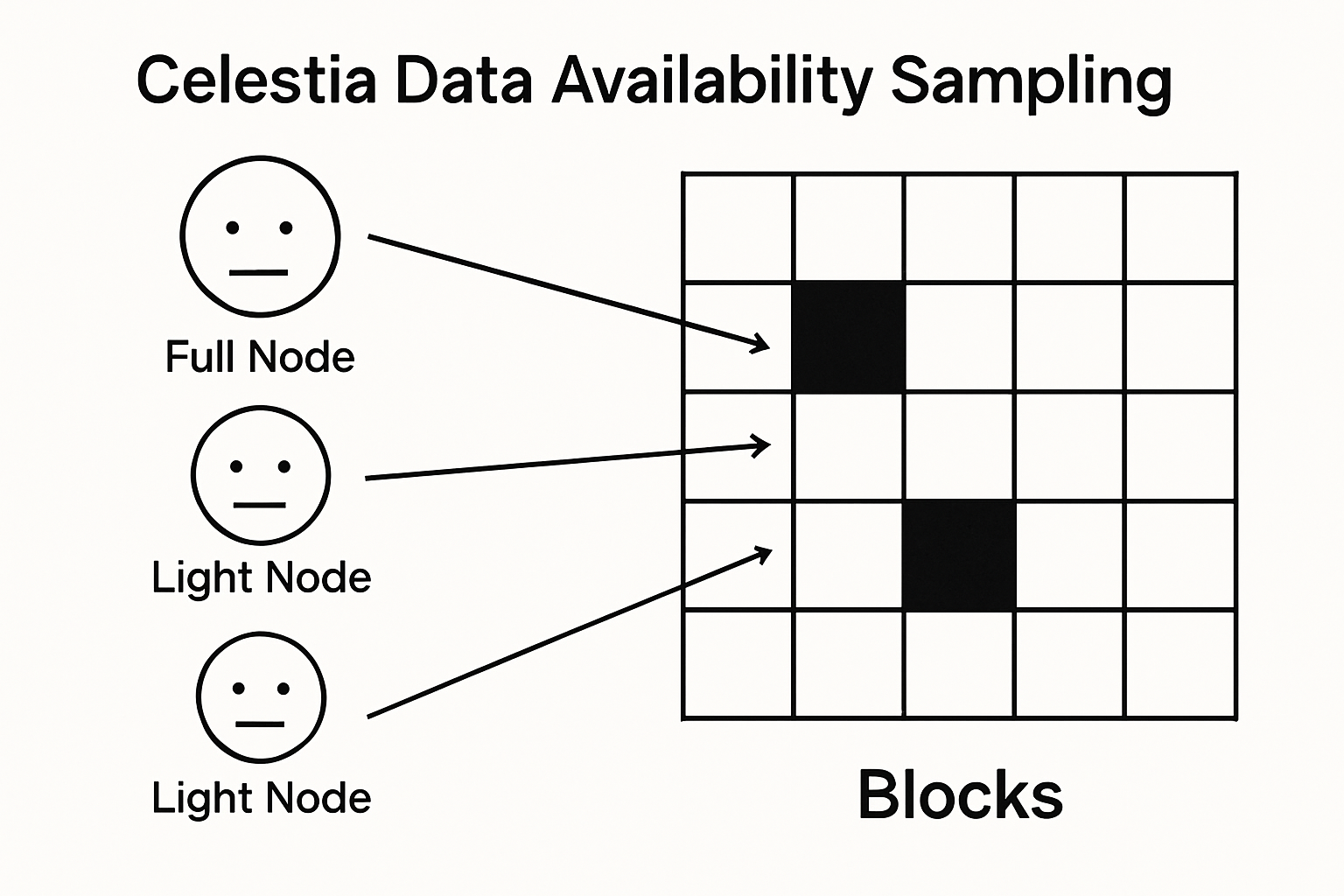
Data Availability Sampling (DAS): Celestia uses DAS to let light nodes efficiently verify that all transaction data is available by sampling small, random segments of block data. This approach enables high scalability without requiring full nodes to download entire blocks.
-
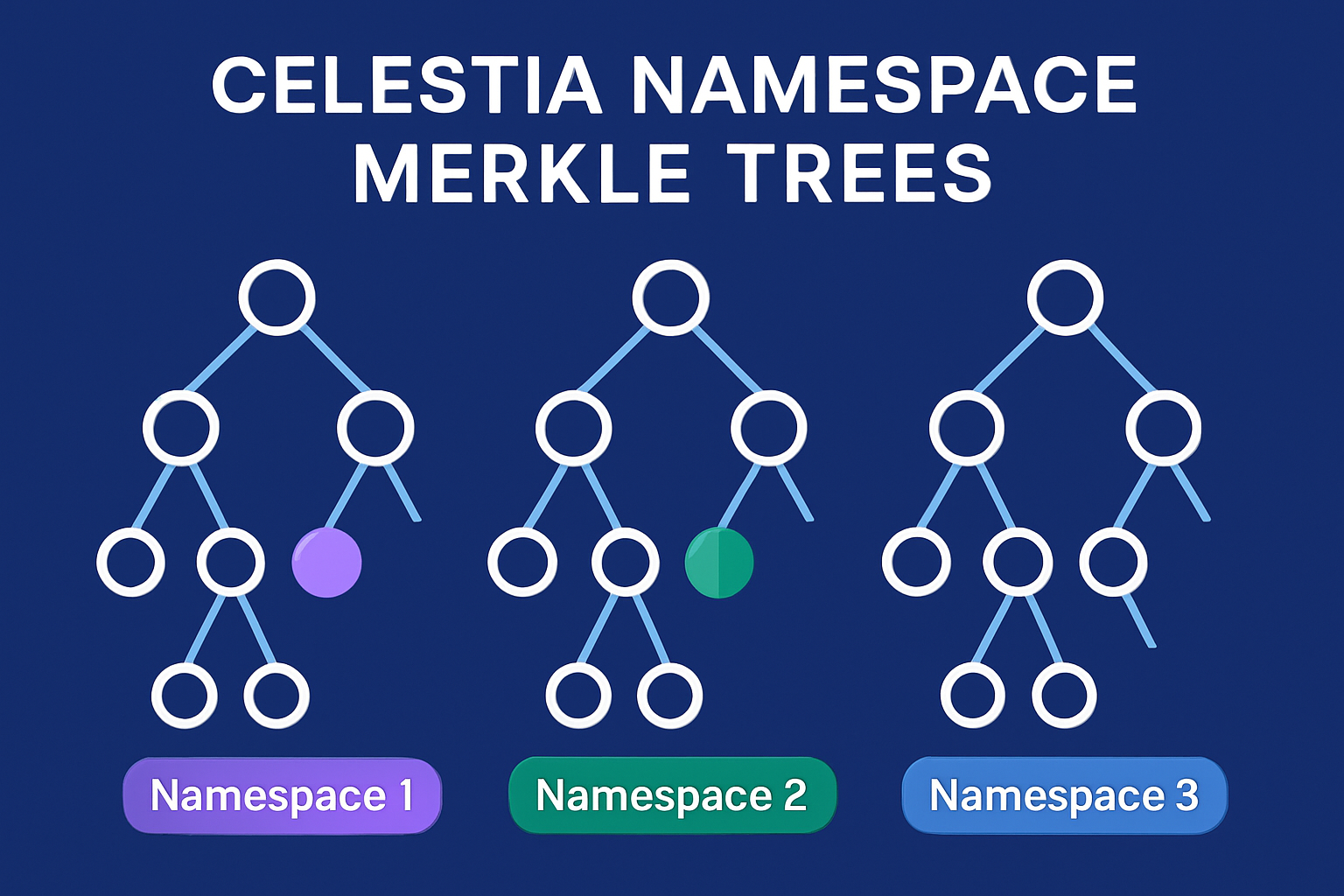
Namespace Merkle Trees (NMTs): With NMTs, Celestia organizes data into distinct namespaces, allowing rollup nodes to access only the data relevant to their chain. This reduces computational overhead and enhances performance for modular rollups.
-
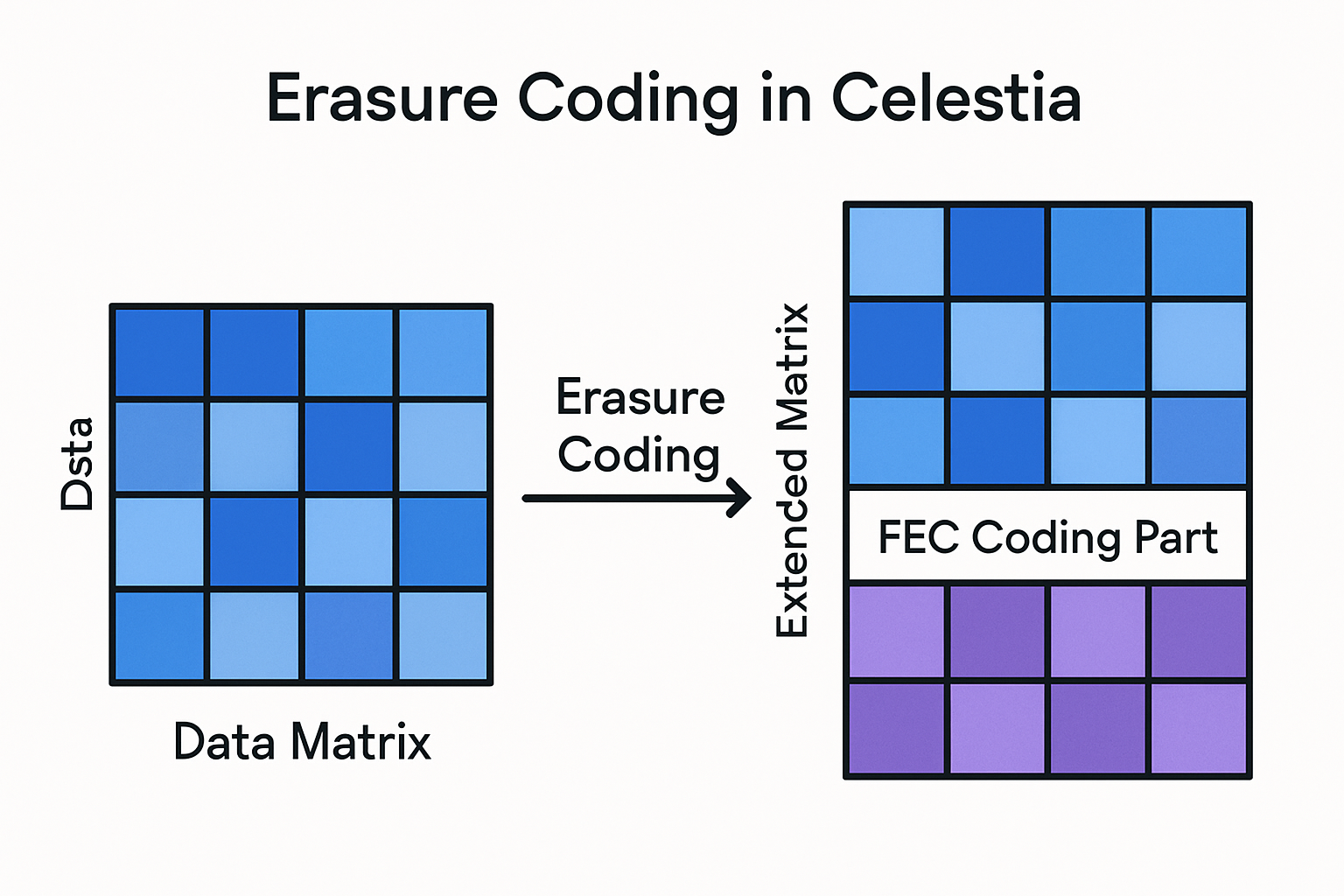
Erasure Coding for Data Redundancy: Celestia implements erasure coding to add redundancy to stored data. Even if parts of the data are missing or corrupted, the original dataset can be reconstructed, ensuring robust data availability for rollups.
-
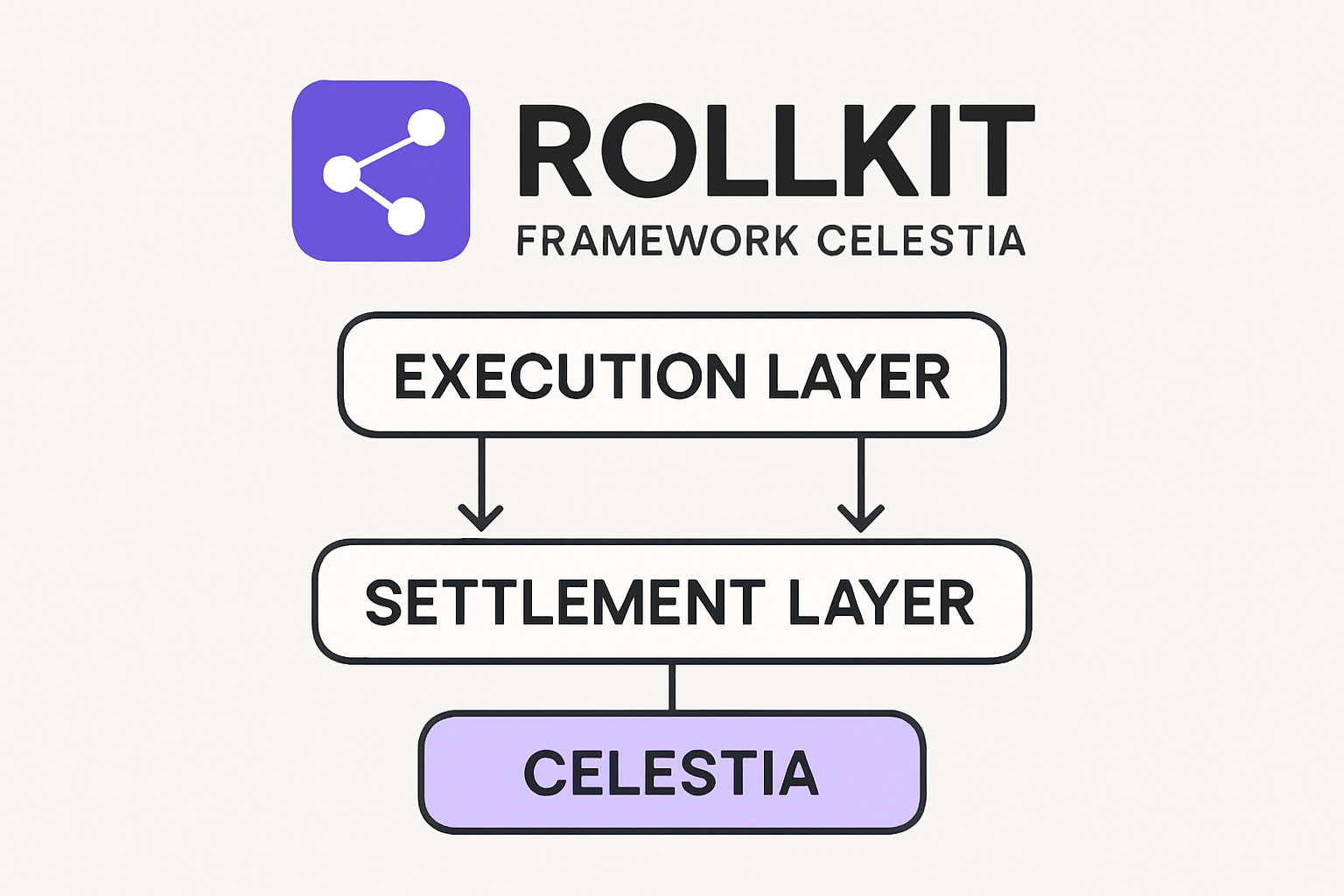
Rollkit: Modular Rollup Framework: Rollkit is an open-source framework that enables developers to deploy modular rollups on Celestia’s DA layer. It supports integration with various execution environments and simplifies rollup development.
-
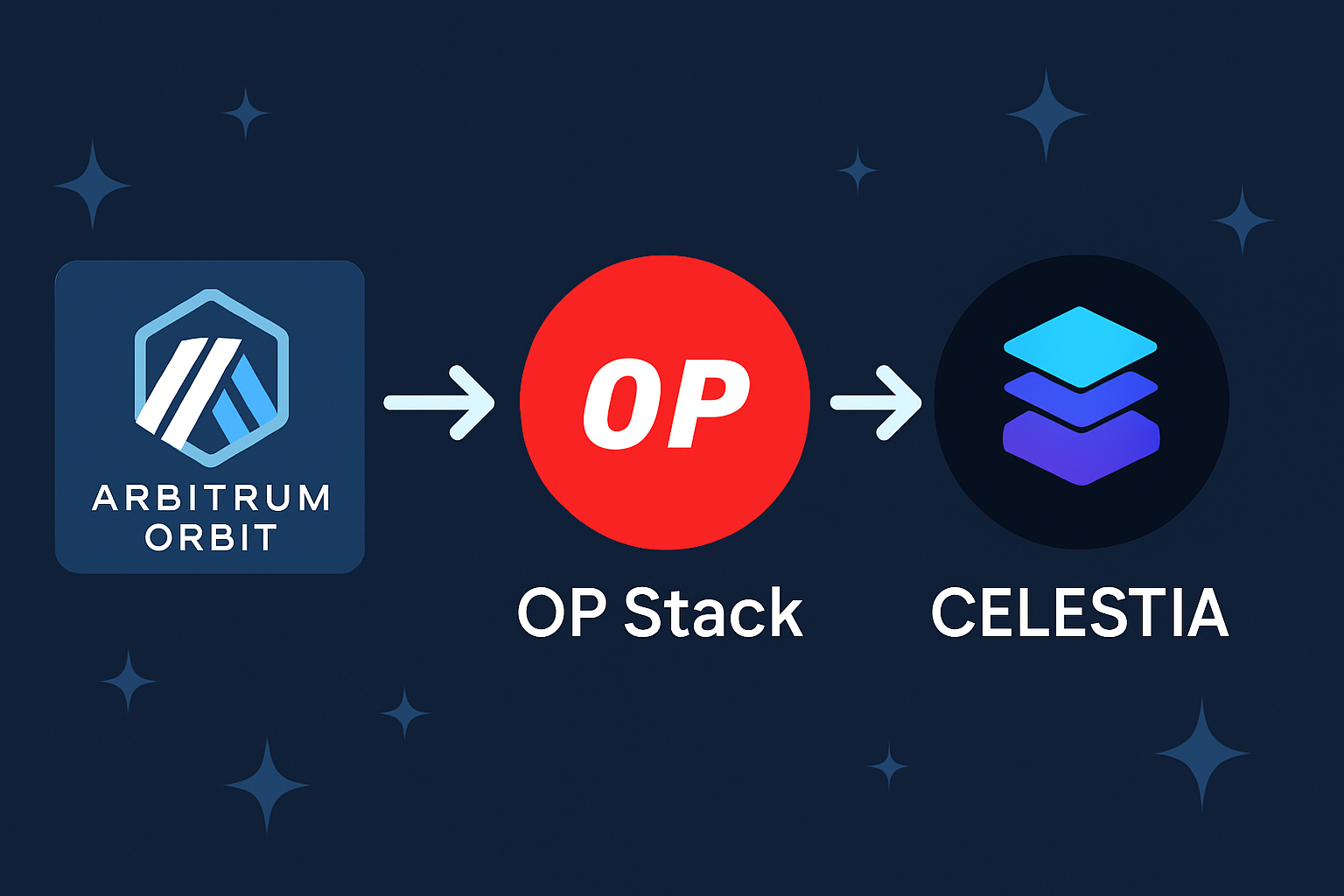
Integration with Leading Rollup Stacks: Celestia supports integration with major rollup frameworks like Arbitrum Orbit and OP Stack, allowing developers to leverage Celestia’s scalability and efficiency for their rollups.
-
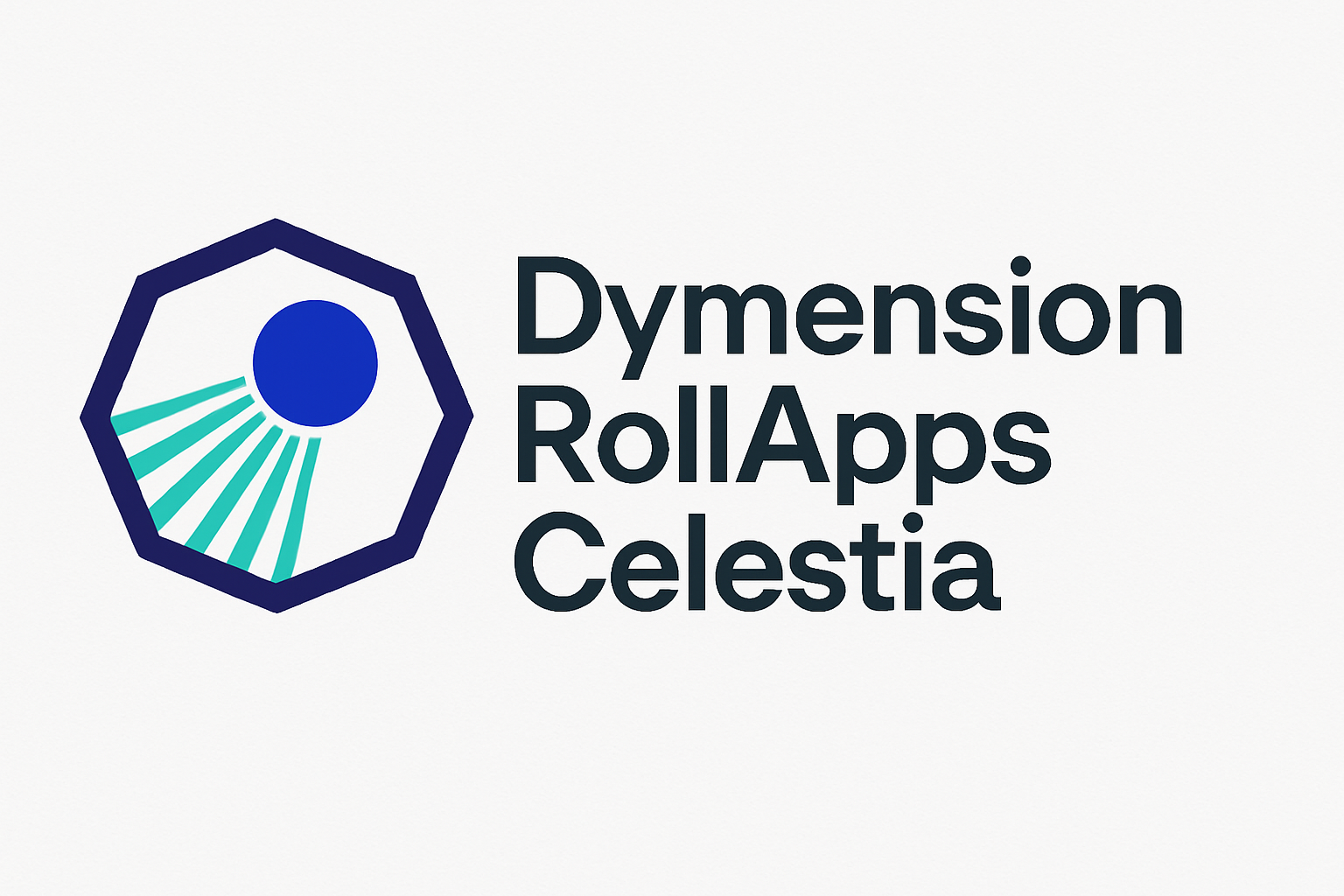
Dymension RollApps Support: Dymension enables the deployment of app-specific rollups, called RollApps, that utilize Celestia for data availability. This facilitates rapid, scalable rollup launches tailored to specific applications.
Data Availability Sampling (DAS): Instead of requiring every node to download entire blocks, Celestia uses DAS so that light nodes can efficiently verify data availability by sampling small random portions of block data. This dramatically reduces bandwidth requirements while maintaining security guarantees.
Namespace Merkle Trees (NMTs): By organizing block data into namespaces using NMTs, Celestia allows rollups to retrieve only their relevant transaction data. This not only optimizes performance but also supports multiple independent rollups on the same DA layer without unnecessary overhead.
Erasure Coding: To ensure robustness against partial data loss or network issues, Celestia employs erasure coding, a technique that adds redundancy so the original dataset can be reconstructed even if some pieces are missing.
Integrating Rollups with Celestia: Frameworks and Tools
The process of building modular rollups on top of Celestia is streamlined by an expanding suite of frameworks and developer tools:
- Rollkit: An open-source framework enabling rapid deployment of modular rollups using Celestia’s DA layer.
- Arbitrum Orbit and OP Stack: These established frameworks can be configured for native integration with Celestia’s DA services.
- Dymension: Deploy app-specific RollApps leveraging Celestia for scalable and customizable solutions.
This modular approach empowers developers to focus on application logic and user experience rather than maintaining their own validator networks or worrying about underlying consensus mechanisms. For a practical demonstration, watch this detailed walkthrough:
The Benefits for Rollup Builders: Scalability Meets Flexibility
The advantages of integrating with Celestia’s DA layer extend well beyond technical efficiency:
- Scalability: Offloading DA responsibilities means rollups can support higher transaction throughput without being constrained by their own infrastructure limits.
- Cost Efficiency: With no need for bespoke validator sets or duplicated consensus mechanisms, operational costs are significantly reduced.
- Customizability: Developers gain complete freedom to design execution environments tailored to their use case, whether it’s DeFi protocols, gaming platforms, or enterprise solutions, all anchored by Celestia’s robust DA guarantees.
This paradigm shift is already attracting attention from leading projects in the space. For example, integrations like those with Arbitrum Orbit and Dymension showcase how diverse ecosystems can converge around a shared DA backbone while preserving autonomy at the application layer.
As Celestia’s ecosystem matures, its modular data availability model is proving indispensable for teams seeking to launch high-performance rollups with minimal friction. By leveraging Celestia’s Data Availability Sampling, Namespace Merkle Trees, and erasure coding, developers are able to deliver user experiences previously unattainable on monolithic blockchains.
Real-World Impact: Modular Rollups in Action
The practical benefits of Celestia data availability are evident in the success of rollup frameworks that have adopted its DA layer. For instance, Rollkit has enabled rapid prototyping and deployment of new rollup chains, while projects like Dymension are leveraging Celestia to launch application-specific RollApps at scale. These integrations demonstrate how modular blockchain data availability is accelerating innovation across DeFi, gaming, and Web3 social platforms.

The flexibility to choose execution environments, consensus layers, and settlement options, without being locked into a single stack, empowers builders to experiment with novel architectures. This adaptability is crucial as demand for scalable solutions grows and as new use cases emerge that require both high throughput and customizable trust assumptions.
How Developers Can Get Started with Celestia Rollup Integration
For those interested in deploying their own rollups using Celestia’s DA services, the process is more accessible than ever. Developer resources, such as the official build portal, provide detailed guides on integrating established frameworks like OP Stack or Arbitrum Orbit with Celestia’s network. Additionally, open-source tools like Rollkit offer templates for launching testnets and mainnets without the need for extensive infrastructure investments.
Essential Steps to Integrate a Rollup with Celestia
-
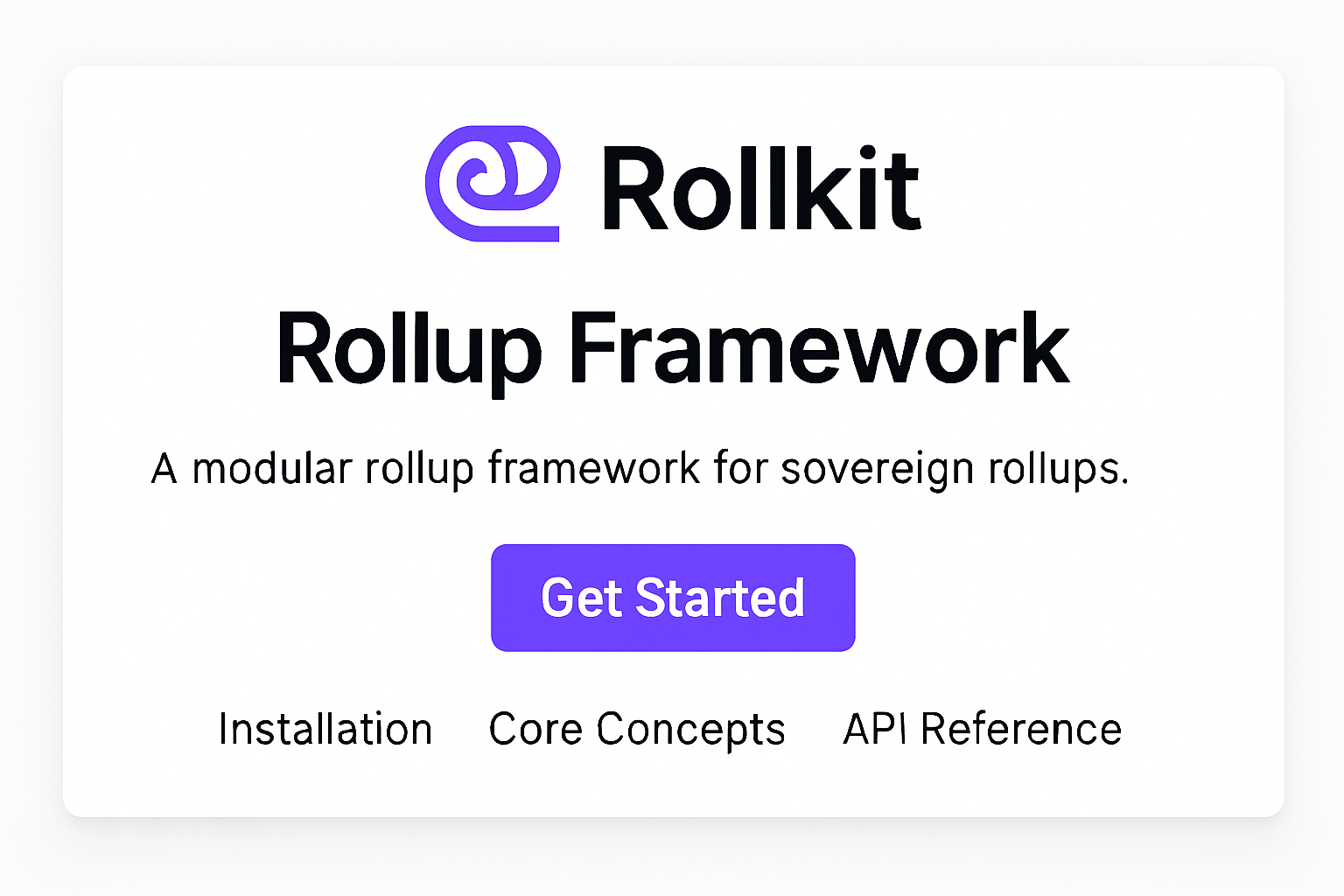
1. Choose a Compatible Rollup Framework: Select an established rollup framework—such as Rollkit, Arbitrum Orbit, or OP Stack—that supports Celestia as a data availability (DA) layer.
-
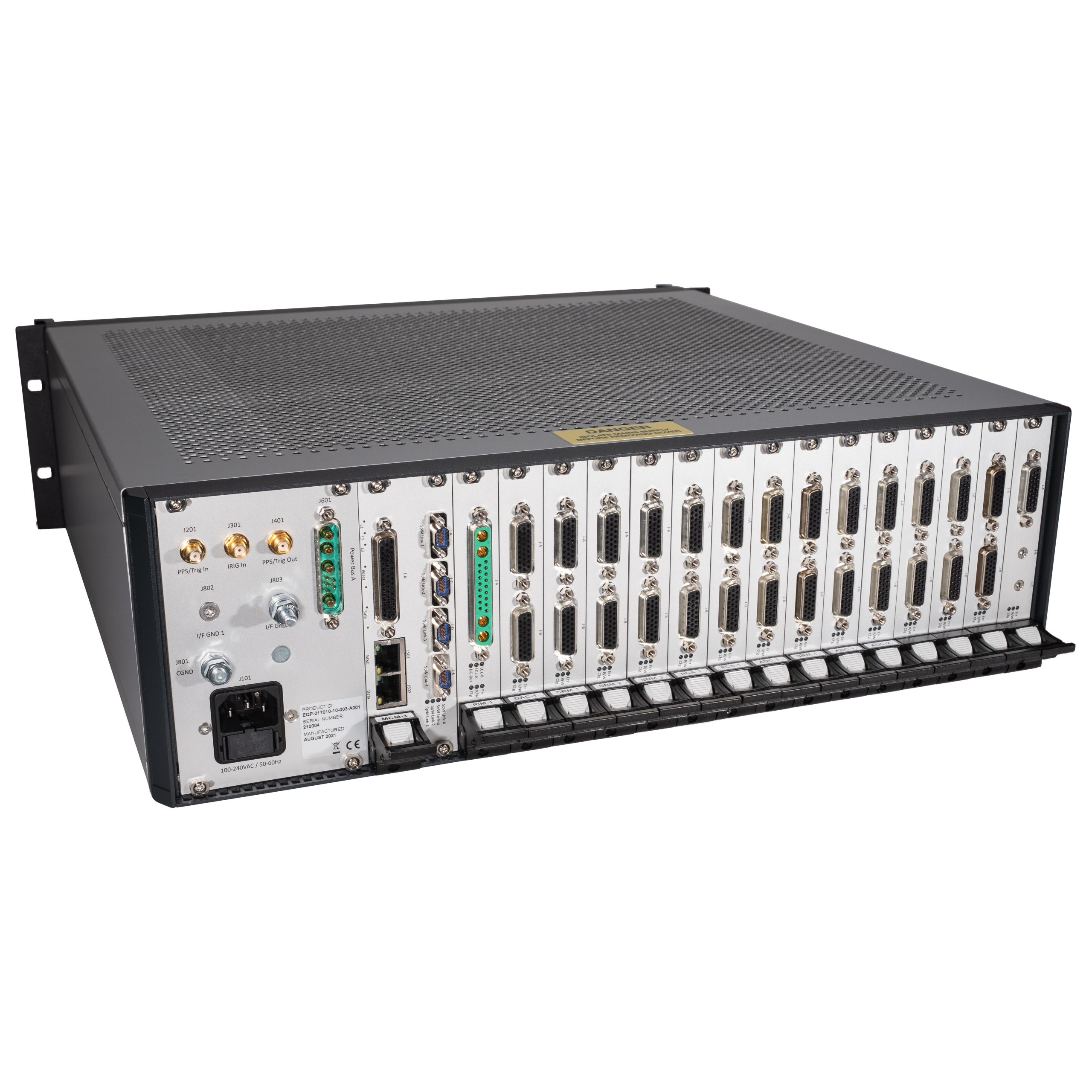
2. Configure Celestia as the Data Availability Layer: Adjust your rollup’s configuration to point to Celestia’s DA endpoints, ensuring that all transaction data is published to Celestia’s modular blockchain network.
-

3. Implement Data Availability Sampling (DAS): Integrate Celestia’s DAS protocol to enable light nodes to efficiently verify data availability by sampling small segments of block data, boosting scalability and security.
-
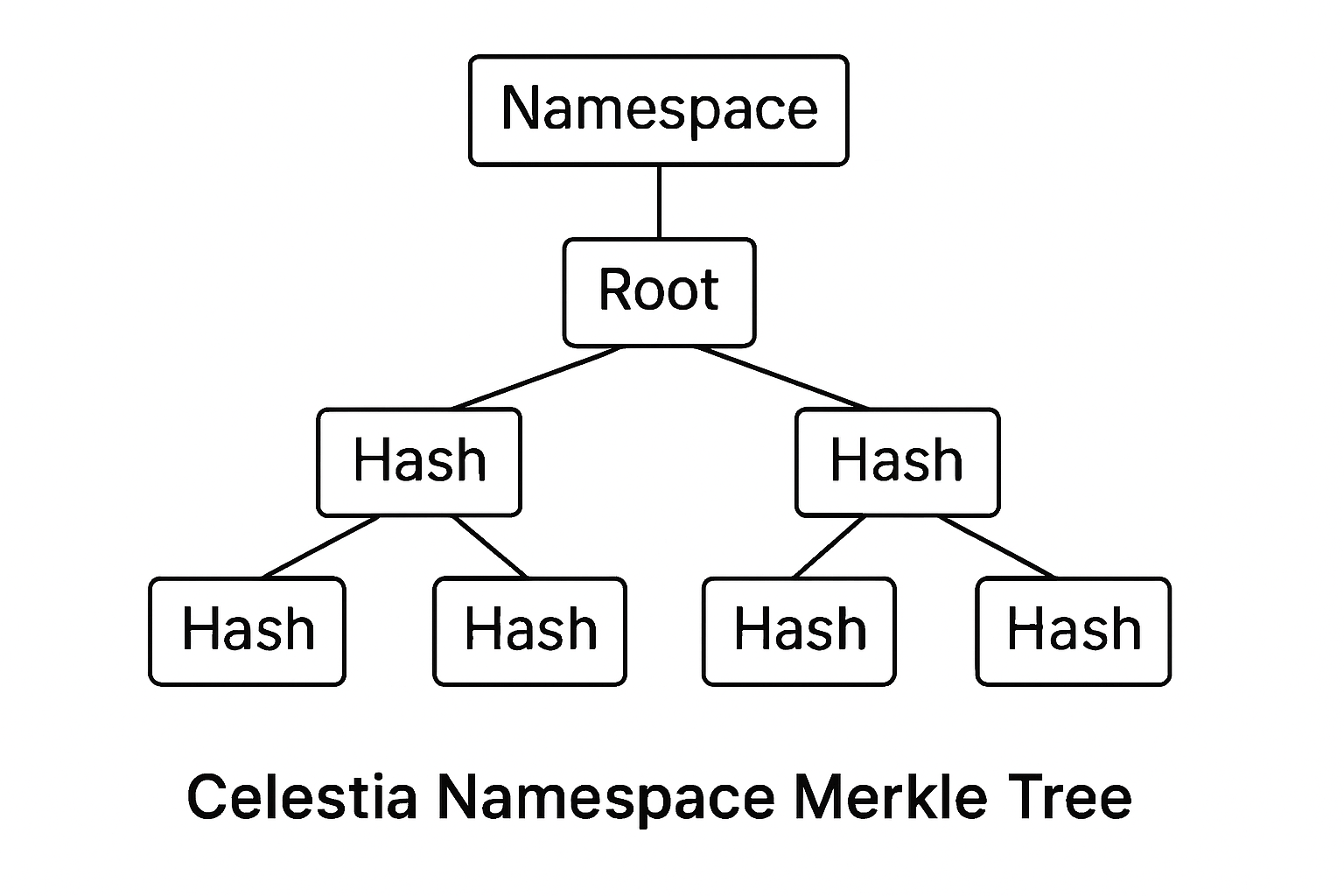
4. Utilize Namespace Merkle Trees (NMTs): Leverage Celestia’s Namespace Merkle Trees to organize and retrieve rollup-specific data, reducing overhead and enhancing performance for your chain.
-
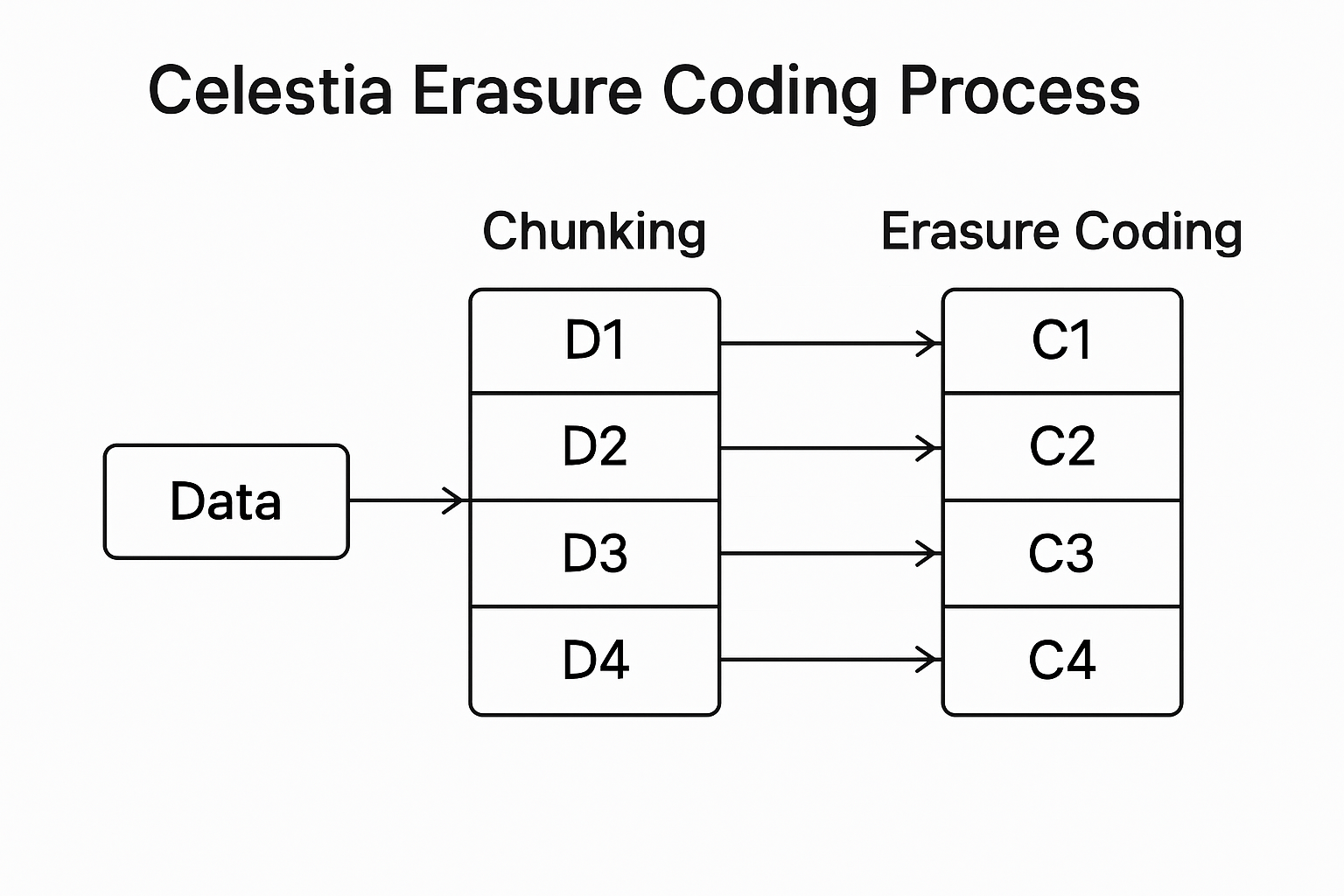
5. Enable Erasure Coding for Redundancy: Ensure your rollup integration supports erasure coding as implemented by Celestia, providing data redundancy and reliability even if portions of the data are missing.
-
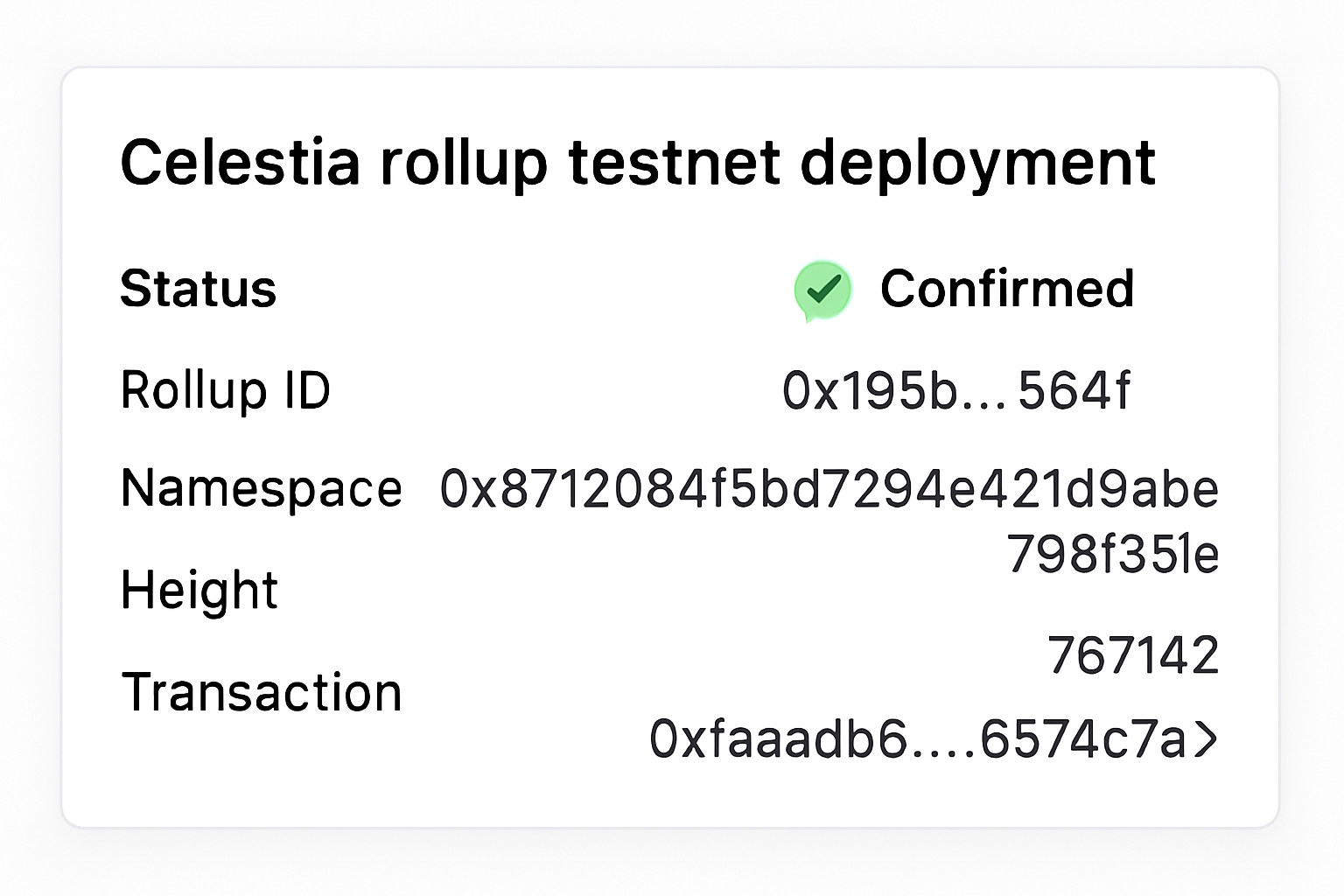
6. Deploy and Test the Rollup Network: Launch your rollup on a testnet using Celestia’s DA layer, monitor data publication, and validate end-to-end transaction flows before mainnet deployment.
-
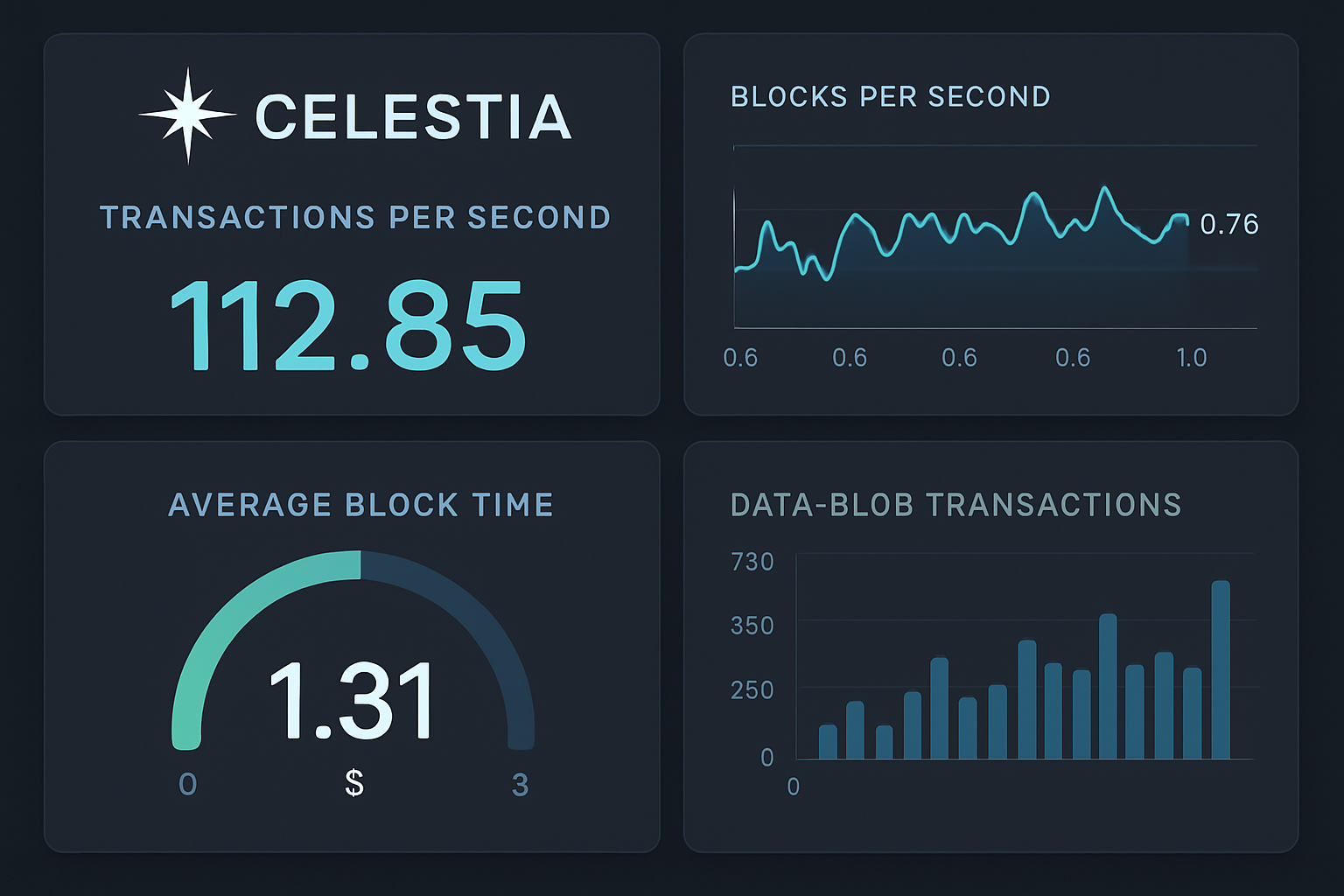
7. Monitor and Optimize Performance: Use monitoring tools to track data availability, throughput, and costs on Celestia (current TIA price: $1.46), optimizing parameters for scalability and efficiency.
Key considerations for successful integration include:
- Understanding namespace allocation: Properly configuring NMTs ensures your rollup retrieves only relevant transaction data.
- Optimizing erasure coding parameters: Fine-tuning redundancy levels can balance performance with resilience against data loss.
- Monitoring DA sampling rates: Adjusting DAS settings enables light clients to efficiently validate data availability without excessive bandwidth costs.
The result is a highly scalable, resilient blockchain solution that can adapt as your project grows, whether you’re building a DeFi protocol or an enterprise-grade application.
Celestia Price Update: Confidence Amid Innovation
The current price of Celestia (TIA) stands at $1.46. Despite recent market volatility, a 24-hour change of -$0.10 (-0.0641%): Celestia’s robust technical foundation continues to inspire confidence among developers and investors alike. As more projects opt for modular rollup frameworks over traditional monolithic chains, adoption of specialized DA layers like Celestia is poised to accelerate further.
“Celestia’s approach fundamentally redefines blockchain scalability by separating consensus from execution and data storage. ”
The future of modular blockchains depends on reliable, scalable data availability, and today, few solutions match the versatility or developer experience offered by Celestia. By abstracting away consensus and validator management, it empowers teams to focus on what matters most: delivering innovative applications that scale securely from day one.






